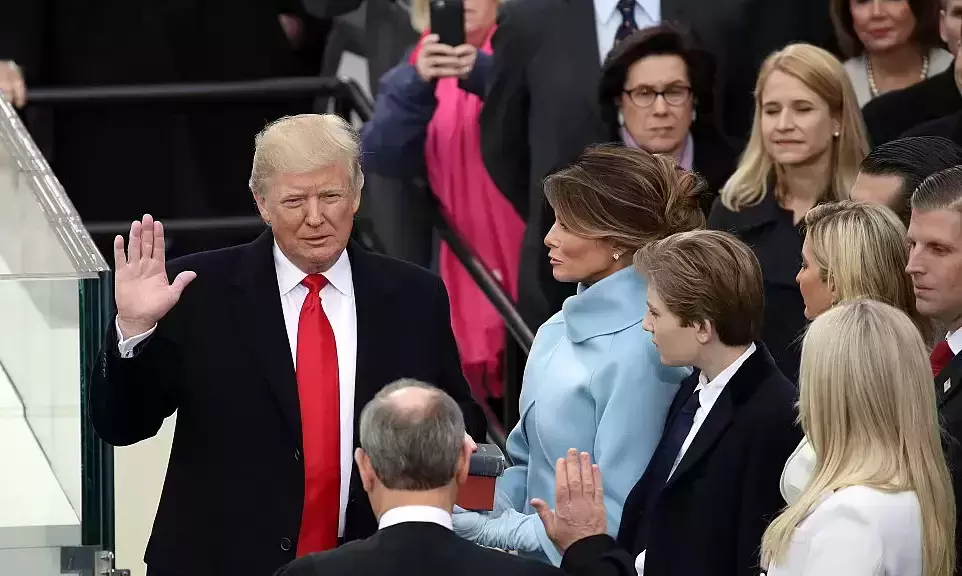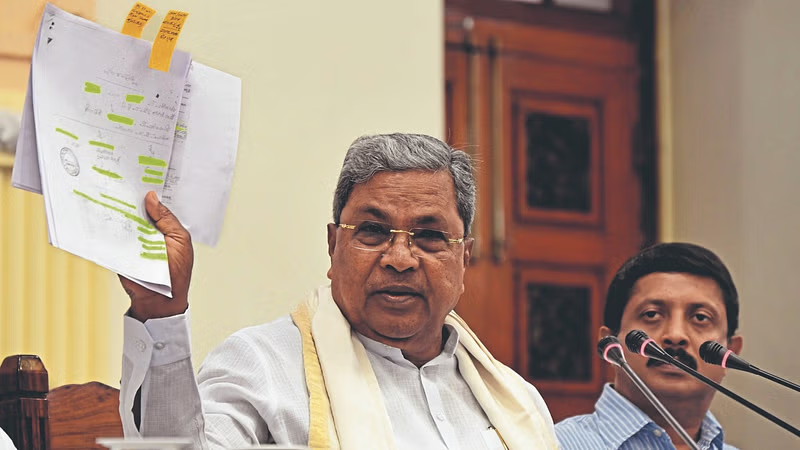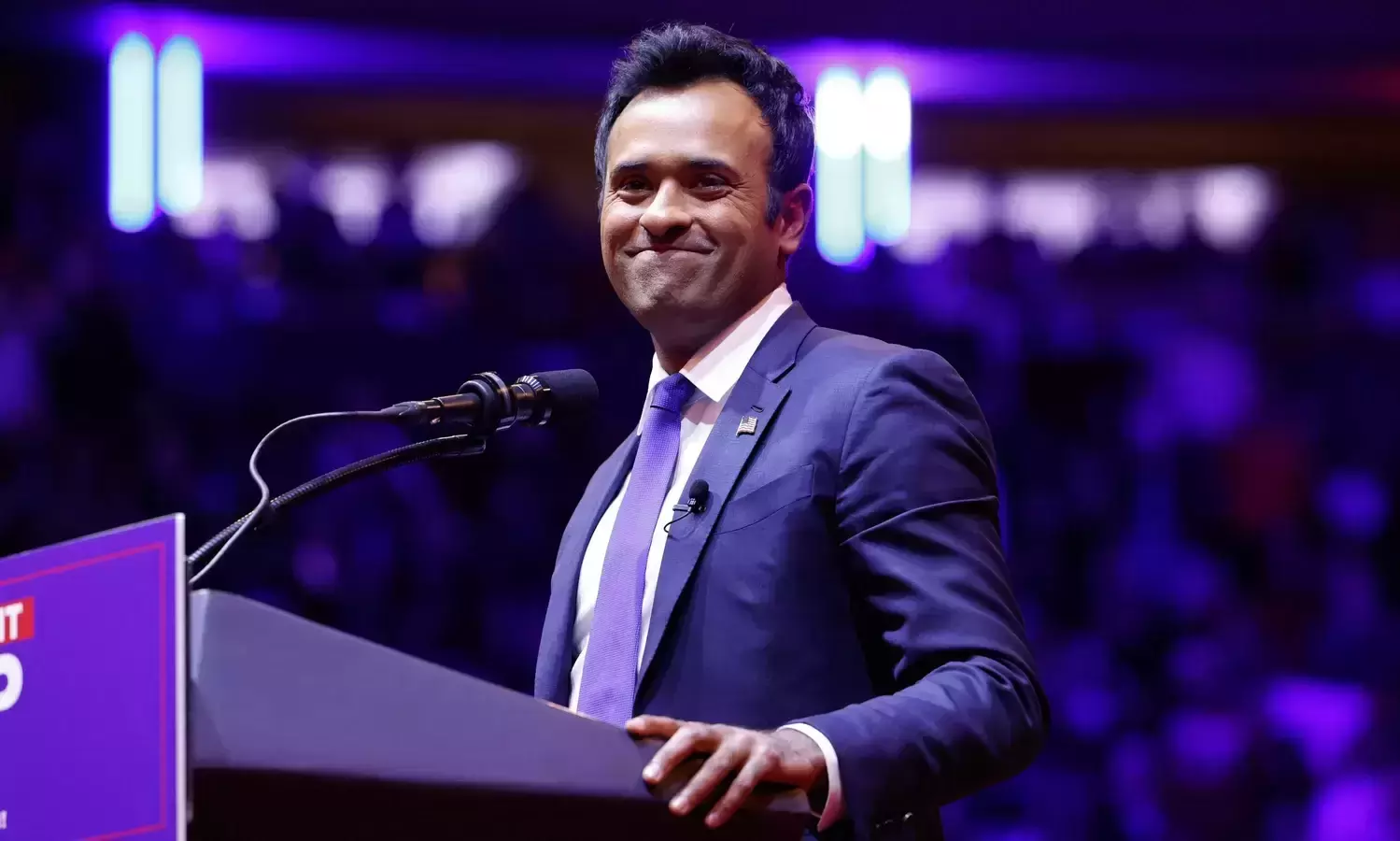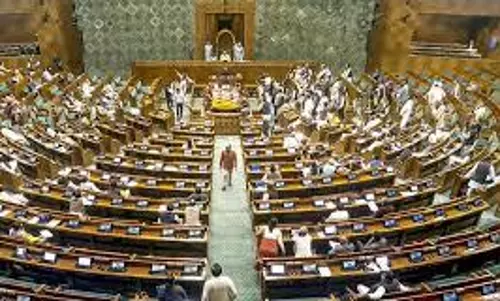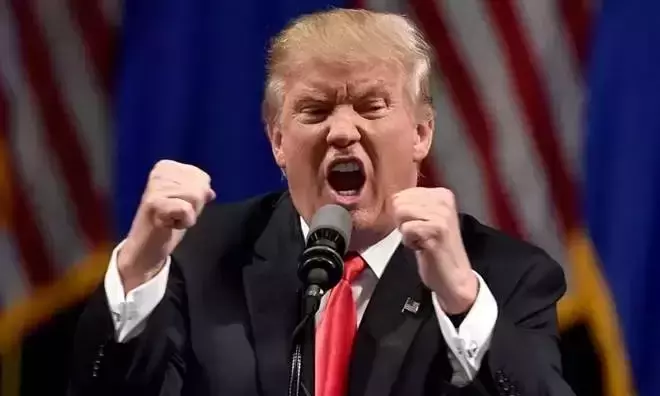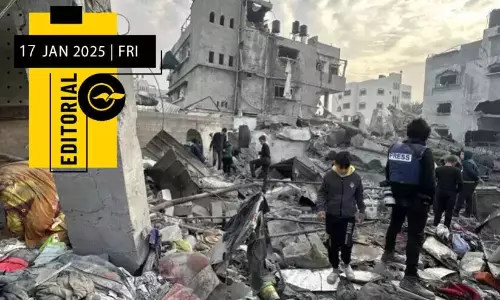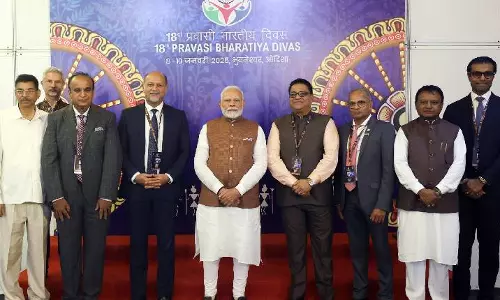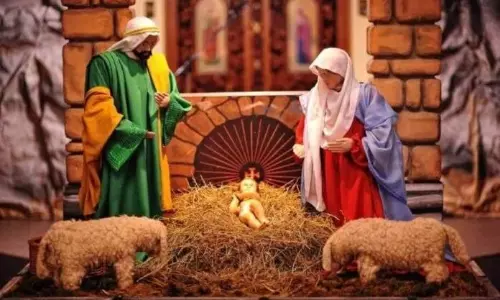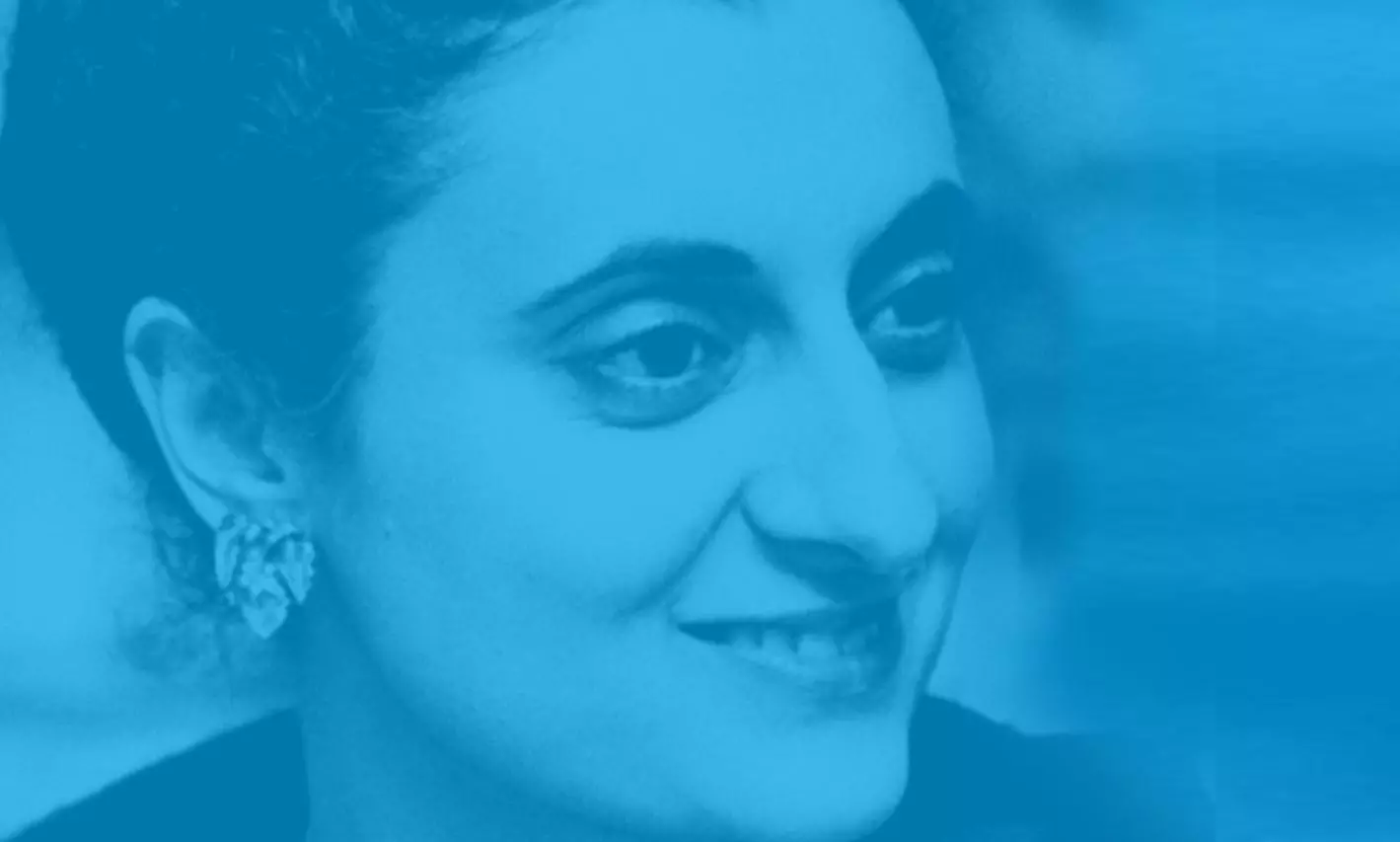
Indira Gandhi: one of the colossi of Indian politics
text_fieldsIt is 40 years since the death of Indira Gandhi. She is one of the colossi of Indian History. So far, she is the only woman to have been Prime Minister of the world’s greatest democracy. Moreover, she was the third woman in the modern world to be elected leader of her country.
Indira Priyadarshini Gandhi has gone down in history as a trailblazer. She is also the second longest-serving Prime Minister of India. Her victory in the Third Indo-Pakistan War birthed Bangladesh. Until then India had a 4:1 numerical advantage over Pakistan. Therefore, Pakistan harboured the ambition to achieve military parity with her neighbour. But when Pakistan lost the east wing, India’s numerical advantage became 8:1 over Pakistan.
The reputation of Mrs Gandhi is tarnished by the Emergency. From 1975 to 1977 she held the Constitution of India in abeyance. The Supreme Court of India permitted her to rule by decree.
Many peaceful opponents of the Congress Party were imprisoned without trial or charge. Gandhi’s dictatorial conduct led to some saying she was more oppressive than the British Raj. Gandhi had former Congress Party comrades of hers interned using the same colonial-era legislation that had been used against her during the Quit India Campaign. Her former deputy Moraji Desai was one of those detained without trial.
There were those who accused her of being as arrogant as Queen Victoria. Some members of Congress left and set up their own Congress Party. The main Congress Party was known as Congress (I), the I standing for Indira. The slogan used by some ‘Indira Is India’ seemed to sum up the cult of the personality.
India Gandhi was born in 1917. Her father, Jawaharlal Nehru was later the leader of Congress and India’s first PM from 1947 to 1964. Indira’s mother Kamala was a Maratha figure. Some years after Indira’s birth Kamala gave birth to a son who died in infancy. Indira became that rarity in 1920s India: an only child. An only child is apt to develop faster than a child with siblings because she has more exposure to adults. She was the apple of her parents’ eyes. All the attention, love and money were lavished on her. Had her brother lived then, perhaps we probably never would have heard of Indira.
The Nehrus were a Hindu family originally from Kashmir. But they lived in Delhi for some generations before shifting to Allahabad. They were lax in their religious observance.
Indira was schooled in English and Hindi. She acquired absolute mastery of the English language. In India of the 1930s under 20% of people were literate. Those who were fluent in English were about 2% of the population but they were the elite. Hindi was far less widespread than it is today.
The Nehrus were non-cooperators from the 1920s. Jawaharlal cast aside his lucrative career as a barrister. He had been born with a silver spoon in his mouth. His father Motilal was one of India’s most celebrated barristers. But Jawaharlal and his father were willing to suffer for the cause of Indian self-governance. They were ordered to pay fines for breaches of the law. When they refused to hand over their money, the police forcibly entered the house to detain goods to the value of the outstanding fine.
The toddler Indira Gandhi punched the policemen as they removed the furniture. She was a fighter from the first.
The Nehrus had attired themselves in Occidental garb for two generations. But in the 1920s they chose to turn their back on Western sartorial style. They publicly burnt their clothes of British manufacture. Instead, they togged themselves in authentically Indian garments. This was more than symbolic. It was part of a boycott of British industry. Indira made a great sacrifice when in solidarity with the nationalist cause she threw her beloved British dolls into the flames.
When Indira was in her early teens her mother died. She had been sickly for some years.
Jawaharlal was in and out of prison throughout the 1920s and 1930s. He wrote his only daughter many letters from his penitentiaries. In them, he wrote a history of the world for her. These were later collected and published as ‘Glimpses of World History'.
Because one of Indira’s parents was dead and the other was incarcerated most of the time it was decided that she needed to go to boarding school. She spent some time at schools in Switzerland where she became fluent in French.
Notwithstanding the Nehrus' demand for independence, they did not deprecate Britannic education. Indira attended Badminton School in the United Kingdom. Yes, that is where the eponymous sport was invented. Then she went on to Somerville, College Oxford. Somerville was one of the women’s colleges of Oxford University. It was later attended by Margaret Thatcher.
While at Oxford Indira joined the Labour Club. The Labour Party in the UK believed that India should be granted independence forthwith. The Conservative Party was inclined to prolong the Britannic superintendence of India for another few decades.
Feroze Gandhi was a Parsi student at the London School of Economics at the time. He was active in the Congress Party. The Indian community of the UK was under 0.1% of the population at the time. It is now over 4%. Through this tiny Indian community, Indira met Feroze, and their friendship blossomed into a romance.
Latin was a compulsory component of Indira’s course. She could not master it. Eventually, she dropped out without a degree. Indira returned to India. She threw herself into political activism.
The Second World War broke out. Strict censorship was introduced, and civil liberties were suspended. The British were taking no chances.
Indira and Feroze decided to marry. The Gandhis were not entirely pleased that their son was marrying outside the faith. To be a Parsi one must be of full blood. But back then the Parsis were not the endangered species that they are today. They married in Anand Bhavan: the Nehrus' house in Allahabad.
From 1942 to 1943 Indira was in prison for sedition. On her release, she conceived her firstborn. Rajiv was born in 1944. In 1946 Sanjay was born. Indira busied herself with looking after her children.
In the 1950s Indira became an unofficial assistant to her father. He was increasingly ailing.
In 1964 Nehru died. He was replaced by Lal Bahadur Shastri. Shastri appointed Indira to the cabinet. She had just been elected to the Rajya Sabha.
Indira’s election as prime minister by the Congress Party was tendentious. She had only two years of ministerial experience. Was this not dynasticism? This was anti-republican. Many preferred the independence movement veteran Moraji Desai. Indira appointed him Deputy Prime Minister.
India became closer to the Soviet Union under Indira. This was out of ideological sympathy but also because she was horrified by America’s presence in Vietnam. The USA had lent towards Pakistan even in the 1950s so India had little other choice than to cosy up to the other superpower.
Mrs Gandhi presided over the licence raj. She is now castigated for this naïve socialism that palsied India’s economic development. Her slogan ‘banish poverty’ did not conceal the fact that poverty remained severe and widespread. Her son Sanjay was supposed to persuade men to go for vasectomies. But some were forced. Her Green Revolution was successful in boosting agricultural yields. Campaigns to spread literacy made progress.
In 1977 the state of Emergency, imposed in 1975, ended. It was supposed to be a temporary measure, but these have a habit of becoming permanent. Some had thought that she intended to establish a dictatorship. In the 1977 general election, Congress was trounced and Indira suffered the humiliation of losing her seat. The Janata Party was a fissile coalition under Moraji Desai. Its components soon squabbled among themselves. Within two years there was another election. Indira was swept back to office.
In the late 1970s, Sikh separatism became a significant force. This started on Indira’s watch. It got far worse in the early 1980s. The Khalistan Liberation Force (KLF) took over the Hari Mandir (Golden Temple). This is Sikhism’s holiest of holy shrines. India could not tolerate this terrorist camp. As the KLF refused to surrender the army was obliged to use force. The Indian victory was resounding in this battle with 100% of the KLF killed, wounded or captured.
Some Sikhs saw this as desecration. Mrs Gandhi was guarded by Sikh soldiers. Some of her aides counselled her to send them away because these men might be tempted to slay her. She said she would never discriminate against anyone.
In 1984 she had just been interviewed for Irish TV by Peter Ustinov. As she walked up the garden path at her house in Safdarjung Road Delhi, two of her bodyguards emptied their magazines into her torso. She was rushed to the All-India Institute of Medical Sciences but even the finest physicians could not save her.




